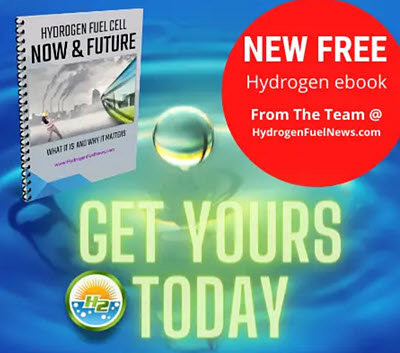
Ricardo to help develop innovative hydrogen engine for Project BRUNEL
March 27, 2023Ricardo has delivered a hydrogen-fuelled research engine to Cummins and BorgWarner.
As part of project BRUNEL, which is part funded by the Advanced Propulsion Centre (APC), the global strategic, environmental and engineering consulting company, Ricardo plc (LON: RCDO), is supporting industry leaders in developing an innovative dedicated hydrogen engine.
The goal of the project is to support ICE sub-systems suppliers increase their use of hydrogen.
 To help reduce carbon emissions, the purpose of the hydrogen engine is to support suppliers of internal combustion engine (ICE) sub-systems in boosting their use of this zero-emissions clean fuel as an alternative solution to traditional fossil fuels across the light commercial vehicle market. The engine is specially designed to burn only hydrogen. This ensures that there are no other supporting fuels that could lead to carbonaceous or excessive air quality emissions.
To help reduce carbon emissions, the purpose of the hydrogen engine is to support suppliers of internal combustion engine (ICE) sub-systems in boosting their use of this zero-emissions clean fuel as an alternative solution to traditional fossil fuels across the light commercial vehicle market. The engine is specially designed to burn only hydrogen. This ensures that there are no other supporting fuels that could lead to carbonaceous or excessive air quality emissions.
Experts in H2 technology and integration, London-based Ricardo has provided an engine that is based on its world-renowned series of singular cylinder research units. This engine can aid research teams, including those from industry leading companies Cummins and BorgWarner, evaluate an array of fuels.
Cummins is a global specialist in diesel and alternative fuel engines and generators. BorgWarner, is an automotive tier 1 supplier and expert in the design and manufacturer of systems for both traditional and electrified propulsion types, including injection equipment for renewable and conventional fuels.
Ricardo is “delighted” to support the development of a new hydrogen engine.
“We were delighted to work as part of a group of internationally renowned businesses to develop a new hydrogen propulsion engine,” said Matt Beasley, President of Established Mobility at Ricardo, in a recent news release. “The project has been achieved through strong collaboration between the organisations involved and yet again demonstrates our expertise and experience in hydrogen technologies.”

The company’s engine has been purposely designed to help engineers evaluate a number of injector types. The engine will reportedly also support the reduction of air quality emissions, increase fuel efficiency and transition toward carbon-free heavy-duty propulsion.
“Ricardo’s contribution to this collaborative R&D project highlights the world-class capability of the UK automotive sector as the industry continues to pivot towards sustainable, zero-carbon propulsion technologies,” said Matt Shillito, Senior Project Delivery Lead, APC.
Shillito added that Ricardo’s research hydrogen engine will allow the BRUNEL consortium to drive hydrogen combustion tech to the next level, helping to ensure the cleanest possible combustion and delivering increased efficiency and high performance at the same time.
“The project is a fantastic opportunity for the partner companies to leverage their existing knowledge to the meet the challenges of zero-carbon transportation here in the UK,” Shillito said.
Join in the conversation and help shape the future of hydrogen energy by voting in our poll today – See Below: [forminator_poll id=”57416″]



 With over 15 years of reporting hydrogen news, we are your premier source for the latest updates and insights in hydrogen and renewable energy.
With over 15 years of reporting hydrogen news, we are your premier source for the latest updates and insights in hydrogen and renewable energy.
Have you looked at the Arrow C series one cylinder? Arrow is the name of the manufacturer. They are based in Oklahoma, the State in the U.S.. They are used in the oil fields across the U.S. on oil well and natural gas pump jacks. And some are used in Inda as generator power packs.
I worked for Linda for 9 years, where I learned transporting H2 as a liquid, or compressed in trailers is not the way to go. Typically, there is an additional cost of $1.25/kg for transporting up to 200 km.
The answer is H2 carriers. I did a lot of work regarding LOHC – and forget it. since you have to send the LOHC(-) back to be recharged to LOHC(+). I am leaning heavily towards Bio-Methanol (~12.5% H2 by weight). You can put it through commercially available reformers, while simultaneously adding ~30% water, and get ~17+% H2 out – by weight. You then take the H2 and put it into a fuel cell to generate electricity to power the electric motors on a Class 7 or 8 truck. I also think that this approach has applications in many of the other categories listed above.
Danny
805 279-5622
Der Verbrenner wird noch sehr lange Leben!
Industry needs to close the circle, and combine efforts not just in one or another of the strands of H2 R&D, but bring ALL efforts together, in concerted, integrated projects. Take Electriq Powder H2 manufacturing. It would behove the Ricardo Team(s) to look at ways to use this novel type pf H2 fuel in a system that allows the powder fuel to be loaded into the storage tank and processed through whatever conversion technology is necessary, stright into these novel hydrogen engines. We cannot wait for the two ends of the circle to join up “sometime in the future” that future has to be NOW! We have run out of time!
Richtig! Der Zeitpunkt für den Einstieg ist gekommen.